East Gobi megalake systems reveal East Asian Monsoon dynamics over the last interglacial-glacial cycle
- PMID: 37055416
- PMCID: PMC10102015
- DOI: 10.1038/s41467-023-37859-1
East Gobi megalake systems reveal East Asian Monsoon dynamics over the last interglacial-glacial cycle
Abstract
Intense debate persists about the timing and magnitude of the wet phases in the East Asia deserts since the late Pleistocene. Here we show reconstructions of the paleohydrology of the East Gobi Desert since the last interglacial using satellite images and digital elevation models (DEM) combined with detailed section analyses. Paleolakes with a total area of 15,500 km2 during Marine Isotope Stage 5 (MIS 5) were identified. This expanded lake system was likely coupled to an 800-1000 km northward expansion of the humid region in East China, associated with much warmer winters. Humid climate across the Gobi Desert during MIS 5 likely resulted in a dustier MIS 4 over East Asia and the North Pacific. A second wet period characterized by an expanded, albeit smaller, lake area is dated to the mid-Holocene. Our results suggest that the East Asian Summer Monsoon (EASM) might have been much weaker during MIS 3.
© 2023. The Author(s).
Conflict of interest statement
The authors declare no competing interests.
Figures

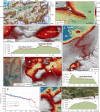
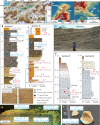
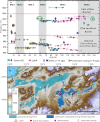
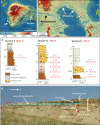

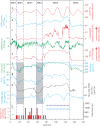
Similar articles
-
Warming-induced northwestward migration of the East Asian monsoon rain belt from the Last Glacial Maximum to the mid-Holocene.Proc Natl Acad Sci U S A. 2015 Oct 27;112(43):13178-83. doi: 10.1073/pnas.1504688112. Epub 2015 Oct 12. Proc Natl Acad Sci U S A. 2015. PMID: 26460029 Free PMC article.
-
Paleoceanography of the northwestern Pacific across the Early-Middle Pleistocene boundary (Marine Isotope Stages 20-18).Prog Earth Planet Sci. 2021;8(1):29. doi: 10.1186/s40645-020-00395-3. Epub 2021 Apr 30. Prog Earth Planet Sci. 2021. PMID: 34722117 Free PMC article.
-
Ice age unfrozen: severe effect of the last interglacial, not glacial, climate change on East Asian avifauna.BMC Evol Biol. 2017 Dec 6;17(1):244. doi: 10.1186/s12862-017-1100-2. BMC Evol Biol. 2017. PMID: 29212454 Free PMC article.
-
Review of the Early-Middle Pleistocene boundary and Marine Isotope Stage 19.Prog Earth Planet Sci. 2021;8(1):50. doi: 10.1186/s40645-021-00439-2. Epub 2021 Sep 3. Prog Earth Planet Sci. 2021. PMID: 34722119 Free PMC article. Review.
-
Pleistocene glaciation of Fenland, England, and its implications for evolution of the region.R Soc Open Sci. 2018 Jan 24;5(1):170736. doi: 10.1098/rsos.170736. eCollection 2018 Jan. R Soc Open Sci. 2018. PMID: 29410798 Free PMC article. Review.
Cited by
-
The past is key for the future of our freshwater systems.Nat Commun. 2023 Jul 6;14(1):3971. doi: 10.1038/s41467-023-39501-6. Nat Commun. 2023. PMID: 37414768 Free PMC article.
References
-
- Williams M. Climate Change in Deserts: Past, Present, and Future. Cambridge: Cambridge University Press; 2014.
-
- Choobari OA, Zawar-Reza P, Sturman A. The global distribution of mineral dust and its impacts on the climate system: A review. Atmos. Res. 2014;138:152–165. doi: 10.1016/j.atmosres.2013.11.007. - DOI
-
- Sun Y, et al. Tracing the provenance of fine-grained dust deposited on the central Chinese Loess Plateau. Geophys. Res. Lett. 2008;35:L01804. doi: 10.1029/2007GL031672. - DOI
-
- Lu H, et al. Formation and evolution of Gobi Desert in central and eastern Asia. Earth-Sci. Rev. 2019;194:251–263. doi: 10.1016/j.earscirev.2019.04.014. - DOI
LinkOut - more resources
Full Text Sources

